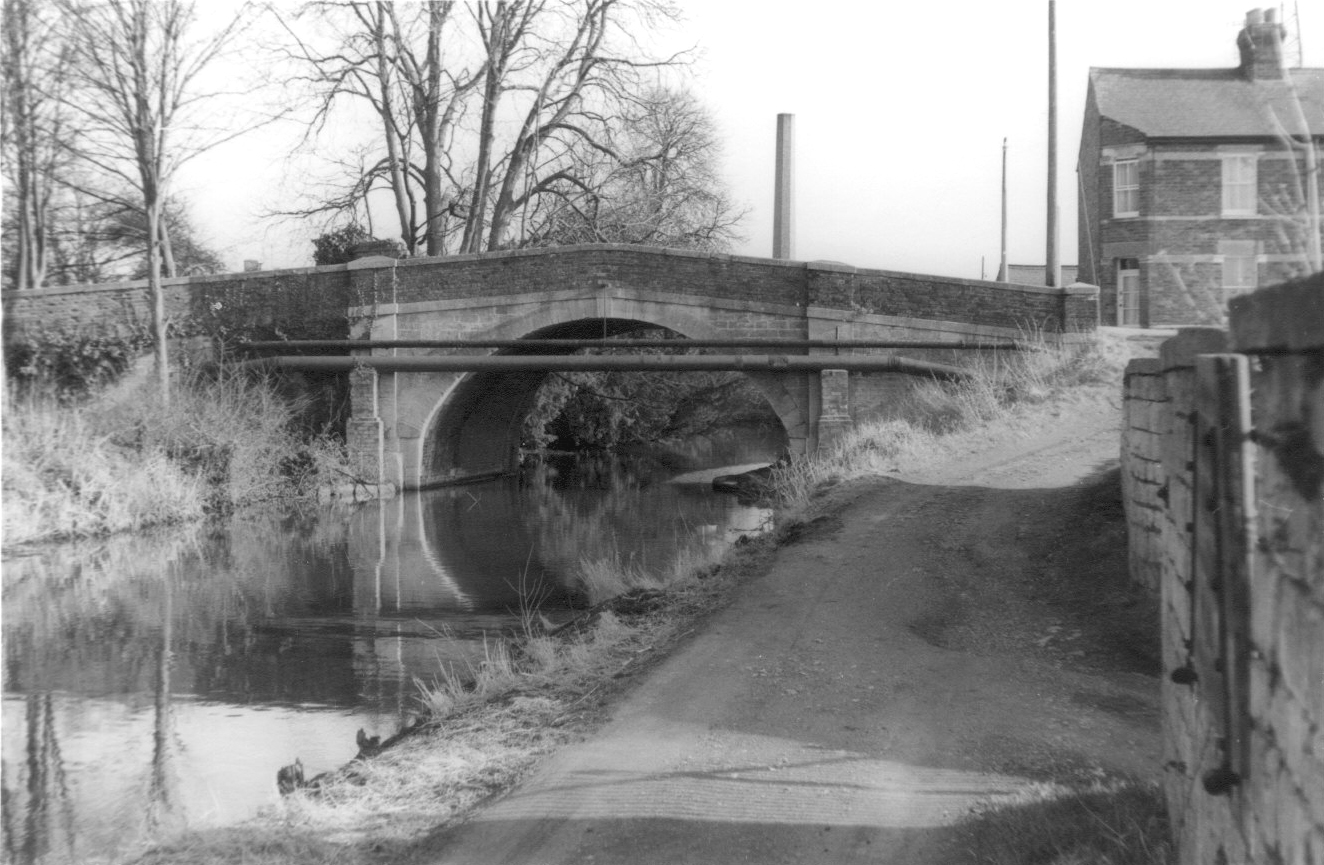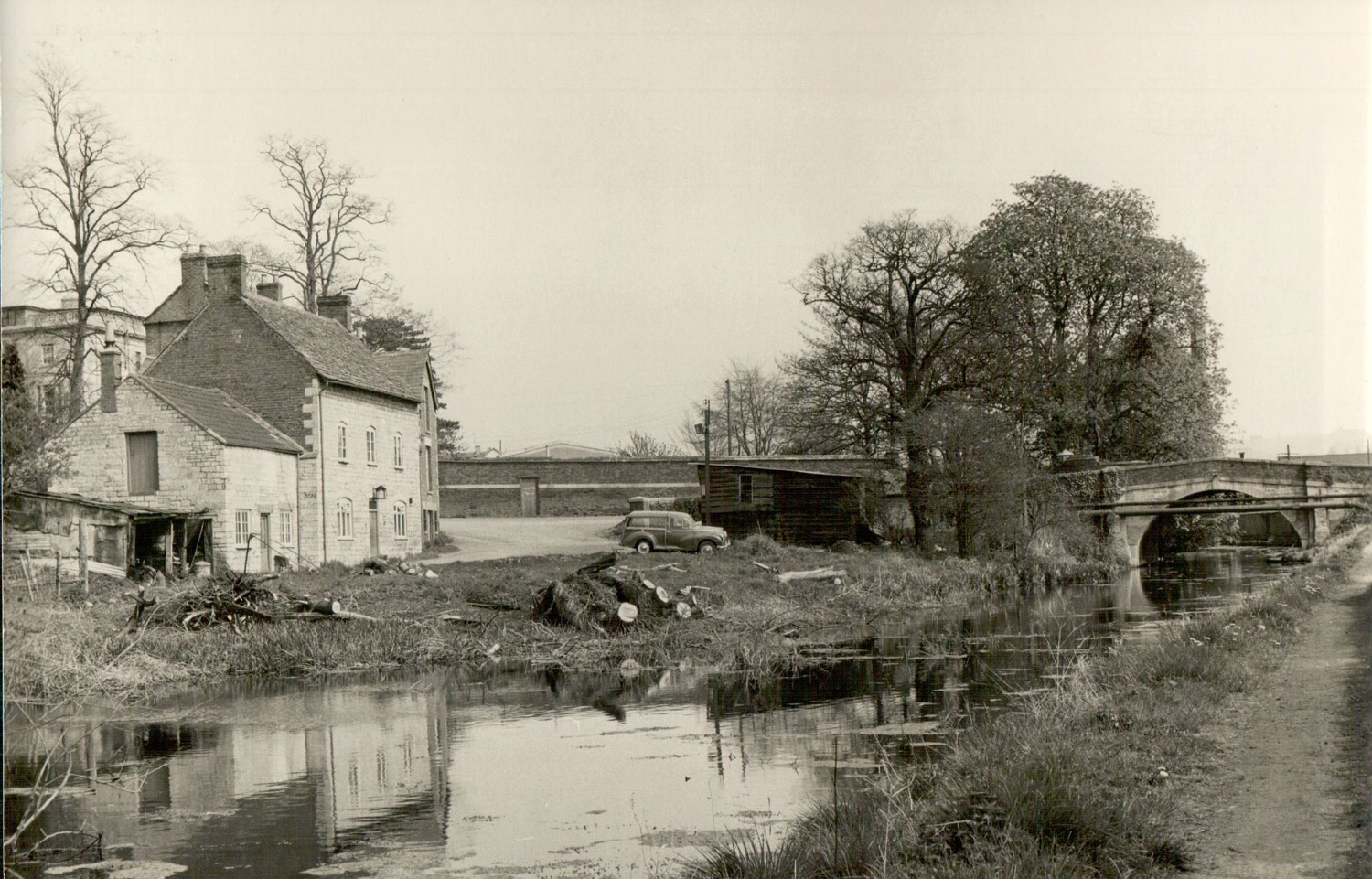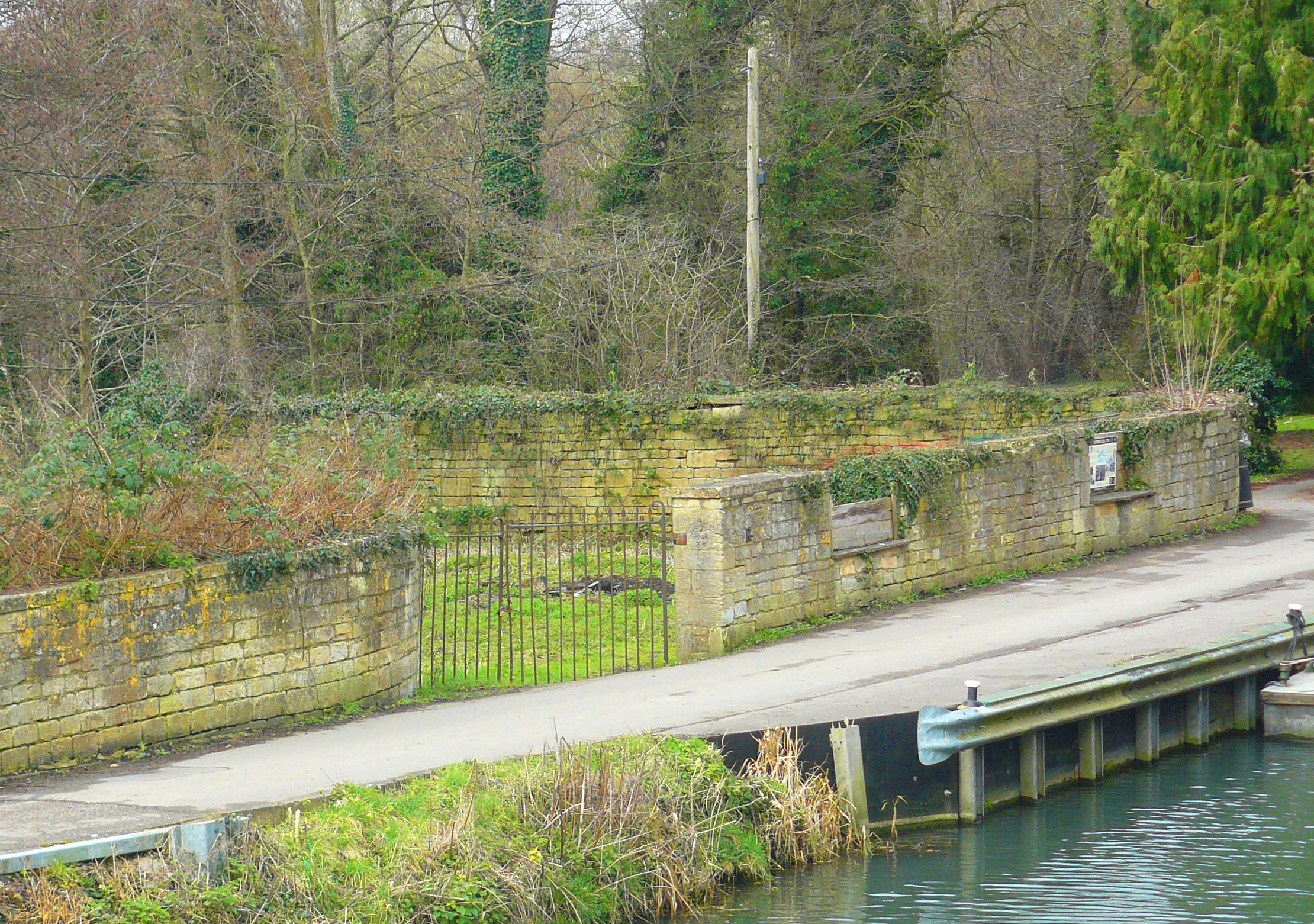The bridge originally carried the road to Kings Stanley, and there was a small wharf to the north-west.


Ryeford Bridge was originally built of brick and it was widened to the west in the 1830s with a stone facing. The stonework has become grooved by the towing ropes of horse-drawn barges. The water pipe across the face of the bridge was seen as a challenge by local boys who liked to make their way along it. For more about young lads on the towpath, visit Towpath Adventures at Ryeford.
The chimney in the background belonged to Ryeford Mill. Spring Cottages on the right were built by mill owners Webb & Spring for their workers in 1889 when they were running the premises as a saw mill.
The road was closed to the south of the bridge in the 1990s when the Ebley Bypass was built.


Close to the road over the bridge, the Stroudwater Company had a small wharf which was rented by local men acting as coal merchants. A rather special cargo arrived in June 1822 when the barge Sisters from Worcester delivered a steam engine weighing 48 ton 7 cwt - evidently on its way to Stanley Mill.
The stone-fronted building on the left was the Anchor Inn, which was run by members of the Lewis/Brunsdon family for almost 90 years. The wide section of water in the foreground was used for turning boats and barges. The building by the road that is hidden behind the Anchor provided premises for cabinet maker W H Smith in 1914, and his name is still on display.


Opposite to the former Anchor Inn are the remains of a coal pen. This was built by Marling & Co in the 1860s to store coal brought by canal on its way to their nearby Stanley Mill on the southern stream of the River Frome.
The front wall has two lower-height sections, suitable for planks to be set up across the towpath while coal was unloaded from a barge moored to the canal bank.
The modern wharf-like structure in the right foreground is actually a means of widening the access to the nearby Canal Cottages.
Before the road to Kings Stanley was sealed off, Ryeford Bridge was a favourite place for joy-riders in cars to get the thrill of driving fast over a hump back bridge. Coming down the pitch from the Ebley road, drivers could see when the road ahead was clear, and if they were going fast enough, they could take off. One day a coal lorry sped over the bridge so fast that part of its load was thrown off and crashed into the front door of the nearby house. The coal merchant paid for a new front door, and the residents also kept the hundredweight of coal that did the damage.
For arrival of a steam engine, see D1180/4/4 Jun 1822.
Date of building Spring Cottages from plaque on building.
For building the coal pen, see D1180/1/5 p370-388.
Joy-riding story from memories of Martyn Morris.